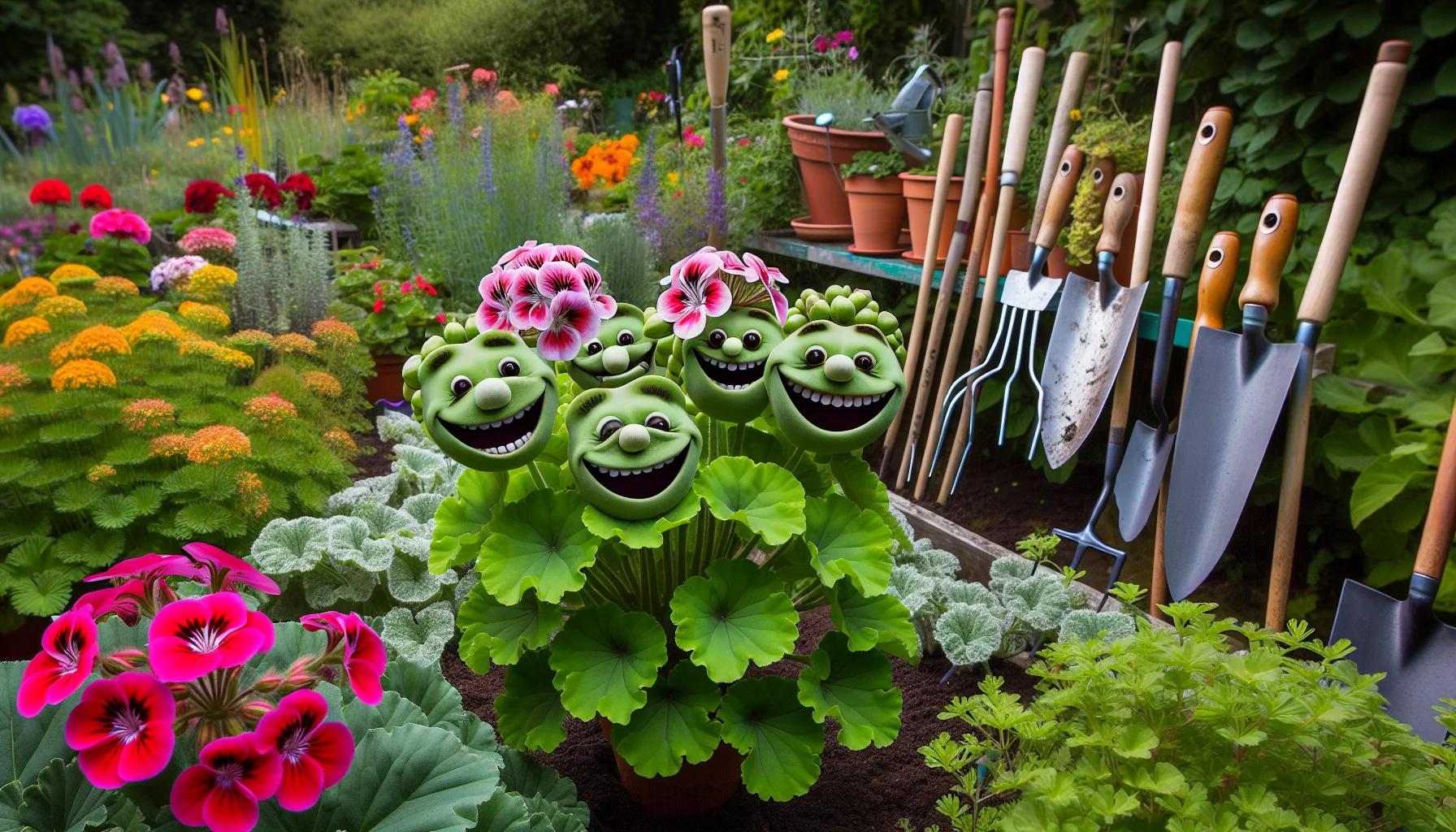Geranium phaeum Quiz
Test Your Knowledge
Question of
Introduction to Geranium Phaeum
Geranium Phaeum, commonly known as the dusky cranesbill or mourning widow, is a species of flowering plant in the Geraniaceae family. Originating from Europe and the Caucasus, this perennial plant is well-regarded for its distinctive dark maroon, almost black flowers, which bloom in late spring to early summer. The foliage of Geranium Phaeum is equally attractive, featuring deeply lobed leaves that can provide a lush backdrop in garden settings. This plant is appreciated for its shade tolerance, making it an ideal choice for underplanting beneath trees or in other shaded areas of the garden. Its easy-care nature and ability to spread moderately make it a popular choice among gardeners looking to add a touch of elegance and mystery to their plant collections.
How to Plant Geranium Phaeum
Geranium Phaeum, commonly known as Mourning Widow or Dusky Cranesbill, is best planted in early spring or early fall. This timing allows the plant to establish itself during moderate temperatures. Geranium Phaeum thrives in well-drained soil rich in organic matter, with a preference for a neutral to slightly alkaline pH level. When planting, ensure the soil is loose and well-aerated to encourage root growth. Initial care includes regular watering to maintain moist soil, especially during dry periods, and mulching to help retain soil moisture and regulate temperature. A balanced, slow-release fertilizer can be applied at planting time to support healthy growth.
Caring for Your Geranium Phaeum
- Watering : Water your Geranium Phaeum deeply once a week to encourage root growth. Allow the soil to dry out slightly between waterings to prevent root rot.
- Fertilizing : Feed your plant with a balanced, all-purpose fertilizer every four to six weeks during the growing season. Avoid over-fertilizing to prevent lush foliage at the expense of blooms.
- Pruning : After the first flush of flowers, prune your Geranium Phaeum back by one-third to encourage a second bloom. Remove dead leaves and spent flowers regularly to keep the plant healthy and attractive.
Common Pests and Problems
Geranium Phaeum, also known as Mourning Widow or Dusky Cranesbill, is a robust and versatile plant that graces many gardens with its deep purple blooms. However, like all plants, it can encounter various pests and problems. One of the most common issues is fungal diseases such as powdery mildew and rust, which typically present as white or orange powdery spots on leaves and stems. Ensuring good air circulation and avoiding overhead watering can help prevent these diseases. Additionally, aphids and vine weevils may target the plant, sucking sap and causing leaves to yellow and wilt. Regularly inspecting plants and applying appropriate organic or chemical treatments can keep these pests at bay. Slugs and snails also pose a threat, particularly in damp conditions, by eating holes in leaves and flowers. Using barriers, traps, or environmentally friendly pellets can help protect Geranium Phaeum from these molluscs. With proper care and vigilance, most issues can be managed effectively, ensuring the plant continues to thrive and enhance the garden.
Geranium Phaeum Varieties
| Variety | Unique Features | Flowering Time |
|---|---|---|
| Mourning Widow | Dark purple to black flowers | Late spring to early summer |
| Samobor | Purple flowers with distinctive maroon markings on the foliage | May to July |
| Lily Lovell | Soft violet-blue flowers | Early to mid-summer |
| Margaret Wilson | Pinkish-purple flowers with variegated leaves | Spring to early summer |
| Album | White flowers | Late spring to early summer |
Design Ideas with Geranium Phaeum
Geranium Phaeum, often known as the Mourning Widow or Dusky Cranesbill, is a charming perennial that can add depth and texture to any garden or landscape. Its dark maroon, almost black flowers, and lush foliage make it a unique choice for gardeners looking to create contrast or a focal point in their outdoor spaces. Consider planting Geranium Phaeum in shaded borders or woodland gardens, where its color can stand out against the green backdrop. It also works beautifully when mass-planted for a dramatic effect or used as an underplanting for taller, light-colored plants, which can help to highlight its dark blooms. For a cottage garden look, mix Geranium Phaeum with pastel flowers to create a soft yet intriguing aesthetic. Its ability to thrive in partial shade also makes it an excellent option for adding life to those difficult spots in your garden that get less sunlight.
Propagation of Geranium Phaeum
Geranium Phaeum, commonly known as dusky cranesbill, can be propagated through two primary methods: seed sowing and division. Seed sowing involves collecting seeds from mature plants at the end of the blooming season, usually late summer to early fall. These seeds can then be sown directly into the garden or started indoors in seed trays with well-draining soil. It's important to keep the soil moist until germination, which typically occurs within a few weeks.
Division, on the other hand, is best performed in early spring or fall. This method involves carefully digging up an established plant and gently separating it into smaller sections, ensuring each section has a portion of the root system. These sections can then be immediately replanted into well-prepared soil, spaced adequately apart to allow for growth. Division not only helps in propagating new plants but also rejuvenates older plants, encouraging more vigorous growth and flowering.












